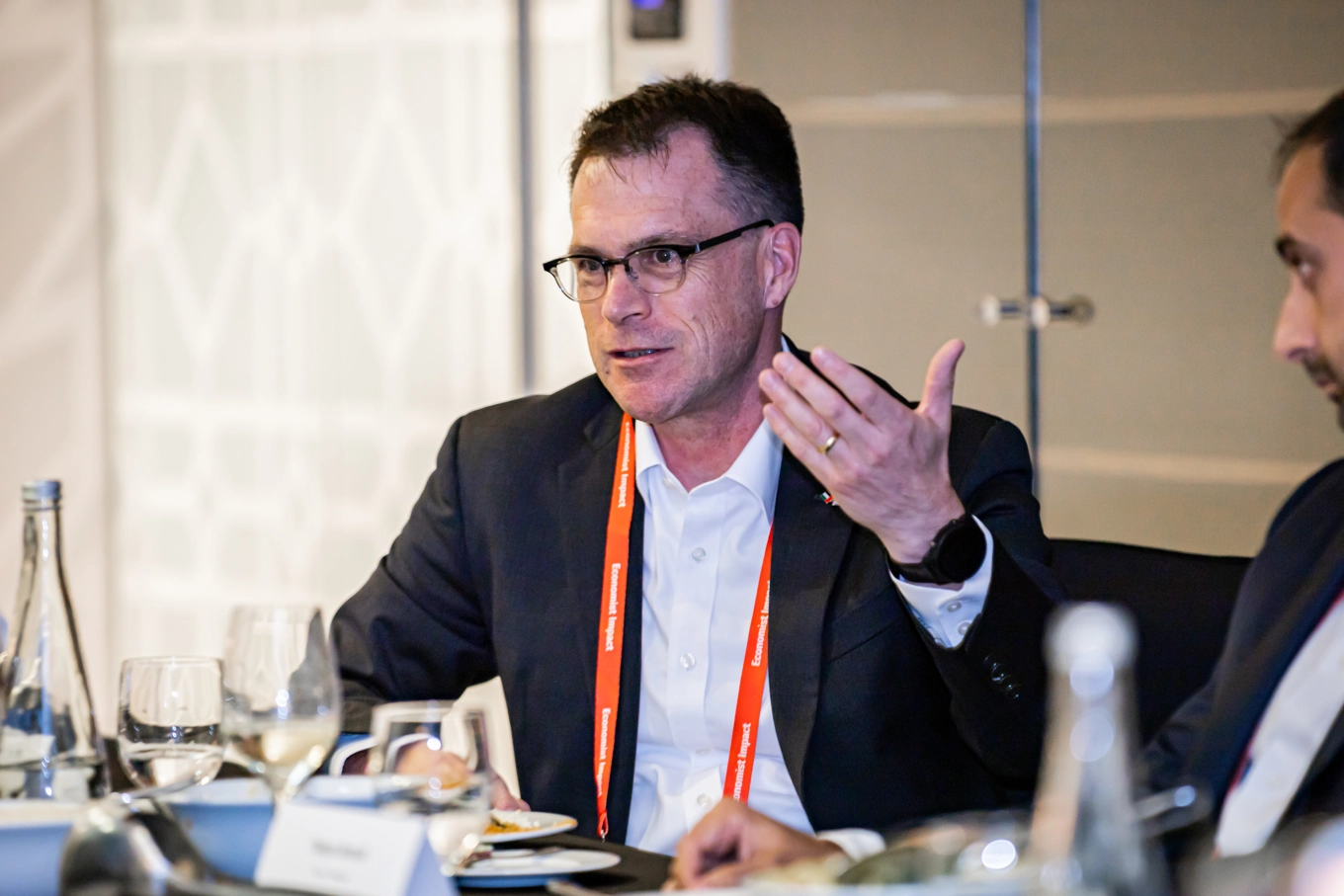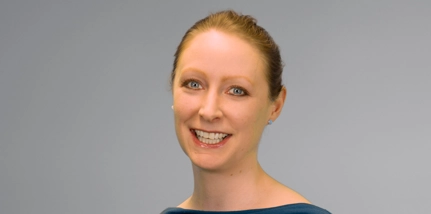
21 December 2023
The measure of success for COP28 is the action we take. Over 100,000 attended and many millions have liked and reposted. Sharing experiences, creating connections, sharpening focus and strengthening resolve. These are all good and important – and what matters most is what happens next. How quickly can we translate our intentions into action?
Representing Smiths at COP was a great honour and reminder of our role enabling success. We are a global team of over 15,000 driven to improve the world through smarter engineering, committed to deliver SBTs for Scopes 1-3 and enabling others to do the same. Smiths technology enables everything from the security systems at COP through heat pumps and high-efficiency HVAC, to industrial electric heaters and sealing solutions that reduce methane emissions and enable hydrogen and CCUS projects around the world.
As a green enabler across diverse markets, Smiths offers practical solutions and perspective on progress. This COP was about taking stock and accelerating pace. The stocktake reaffirmed that delivering a 1.5C world requires a dramatic increase in the scale and speed of change. For all the progress in growing order books for green-enabling technology, we must go much further and faster. Participating on several excellent roundtables at COP and connecting with peers and partners helped deepen my appreciation for policymaking and project finance in a dynamic world ¬– and the importance of keeping it simple.
Projects on the ground are what matters, and we are building momentum. At Smiths, we see green investment accelerating across all sectors and major markets. Public and private sector net zero commitments are increasingly manifest in procurement and pushing ever deeper into supply chains. The US IRA demonstrates the power and speed of bankable supply-side production incentives and race-to-the-top responses are emerging around the world. First-mover offtake agreements and private demand aggregation are building confidence for investment and supporting real-time innovation in critical sectors.
EU CBAM and other regulatory schemes portend economy-wide impacts that will emerge over the next 5-10 years. And COP28 commitments to advance carbon accounting standards – while less headline-ready – lay an important foundation for COP29 progress on Article VI and related efforts to support and accelerate efficient and just transition. In the face of this, the lawyerly parsing of “phase-out” and “phase-down” can seem a curious distraction.
Entering 2024, active conflicts in Ukraine and Gaza and elections approaching in the US, India and UK caution against bold predictions. The next 12 months are sure to bring surprises. Nevertheless, we recognize that the practical work of decarbonization at scale cannot afford to stop and start and projects will move at the speed of their economics. Our collective commitments, incentives and momentum will continue driving progress.
Beyond the headlines, three themes emerged from Dubai that ring true to our experience at Smiths:
1.Technology we need is here today and advancing rapidly for the future
Net zero will be technologically enabled and not technology limited. Decarbonizing today is first and foremost a matter of deploying available technology at scale and with speed.
Panel after panel and booth after booth at COP28 reinforced this message. Among the most visible proof points was Fortescue’s ammonia-ready Green Pioneer docking in the Dubai harbor. The lesson of Green Pioneer is the outsize impact of practical engineering applied with purpose. As reinforced by many, decarbonization today is not about hoping on moonshots. It’s about getting on with the doing.
Purpose-driven engineering – with real deadlines and budgets – inevitably leads us forward, exposing and passing each hurdle in turn. As Fortescue’s Dr. Charlotte Kirk memorably shared, success comes from addressing the closest croc to the boat – an elegant metaphor capturing both the urgency of action and practical insight on the mechanics of innovation and progress.
At Smiths, we take this as a consistent lesson from our 170-plus years of pioneering progress and daily work across multiple global markets. To share one example: Airports with net zero commitments – of which there are many today, and happily growing fast – naturally value the energy efficiency benefits our Smiths Detection team bring to our work of enabling safe and secure global travel.
By all accounts, sustainable aviation fuel is the bigger mountain to climb for net zero air travel. Our John Crane sealing solutions and STS Aerospace components have important roles to play in that longer term project – reducing emissions from today’s fuel as we enable today’s work on tomorrow’s. Those challenges were front and center at COP and – supported by prominent pledges and actions – our teams are working daily to deploy available solutions as we innovate for tomorrow.
High-impact work advancing SAF it rightly draws the spotlight. Smiths Detection’s work to improve the efficiency and flow of airport operations may not be as newsworthy, but it’s an important piece of the puzzle. And combined with John Crane and STS Aerospace, it’s a great example of how we work with our customers – equally airports as energy companies and jet engine manufacturers – to enable their success and deliver together on our net zero commitments.
2. Capital investment in the next 5-10 years will define our path for the next 50-100 years
Decarbonising the global economy requires massive investment in infrastructure. While estimates range, observations from diverse perspectives at COP share three conclusions. First, that today’s single-digit trillions level for global investment is driving objective system-level changes on the ground for both energy and material flows globally. Second, that delivering net zero and preserving the potential for a 1.5C world requires a significant and rapid increase. Finally, that where and how these investments deploy in the next 5 years – whatever their ultimate size and impact – carries enormous implications for global security and equity as much as climate and finance.
At Smiths we see investment impacts first-hand in the form of projects. Global build-out of hydrogen hubs, valleys and clusters with their associated industrial ecosystems are among the biggest changes we see emerging at pace. Led by the US IRA and other incentive schemes, our opportunity pipeline for CCUS projects more than doubled in 2023. In the last six months alone, John Crane won contracts to supply advanced seals and filters to enable the world’s largest offshore CCUS project – slated to sequester up to 3.3 million tonnes of CO2 per year in Malaysian geologic reservoirs – as well as the Net Zero Hydrogen project in Alberta, Canada and a flagship blue hydrogen project in the Gulf that will produce over 650,000 tonnes of clean hydrogen per annum. We are also proud to partner with Midrex and be selected by H2 GreenSteel to supply XGW electrical heating systems for locally produced green hydrogen to enable the world’s first commercial-scale H2-DRI steel mill in Boden, Sweden.
These projects and many more are planned to become primary nodes of green industrial economies. The investments are real and happening today. Physical build-out of the projects and associated infrastructure is inherently a 10-20 year global effort that will redefine supply chains and the consequent structure, strength and security of economies and jobs through 2100 and beyond.
3. Action builds momentum.
The path to net zero 2050 is emerging step by step, and our actions today determine our options tomorrow.
Following the example of Fortescue’s Green Pioneer – more than anything, we need to get on with the doing. Getting to gigatons starts with kilotons and megatons. Addressing the nearest crocs is essential for success today and will open new pathways for tomorrow.
At Smiths, we see and trust most the actions taking shape on the ground. Deploying available solutions today at scale and pace is the practical and urgent work of keeping 1.5C alive. For us, that means continuing our focus on efficiency and emission reductions while working to enable each step toward economies, businesses and societies that thrive on green electricity, zero-carbon fuels and circular material flows.
Our 170-year history teaches the wisdom and power of practical engineering solutions. Improving the world through smarter engineering is all about getting things done. Global energy, transportation and industrial production are vastly complex and dynamic systems. We work in and across these sectors globally every day. As green enablers, we know that predicting each step of a 30-year journey isn’t possible or necessary – and, equally, that each step we take builds momentum for the future.
Facing our shared global challenge requires hope and urgency in equal measure – and action above all.
We can do this.

Related blogs

Getting the Smiths Group Foundation up and running Find out more 

Innovation and talent development are top priorities for Smiths. When the two combine, great things happen.
Find out more

How do we create pathways for women to advance to senior leadership/CEO roles?
Find out more



